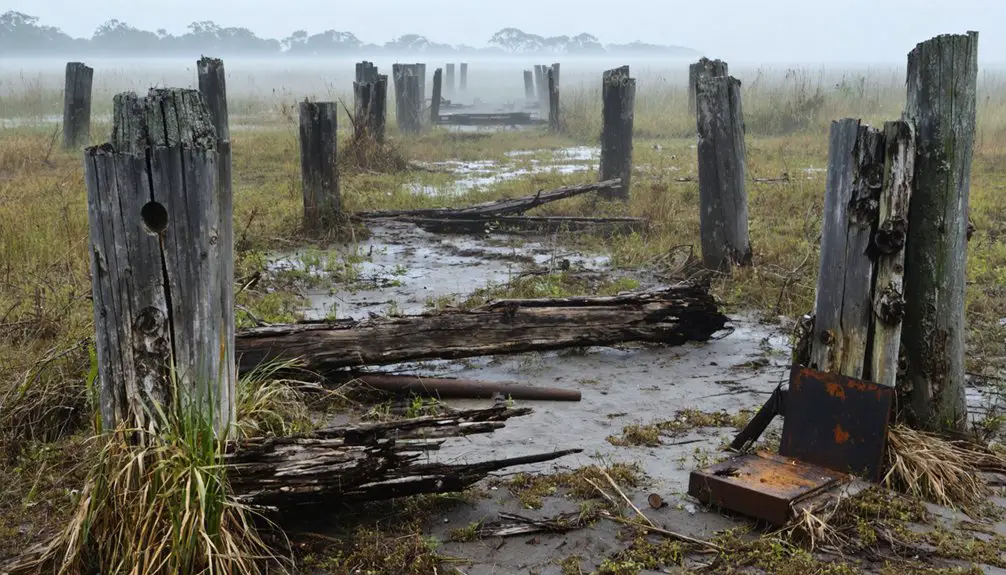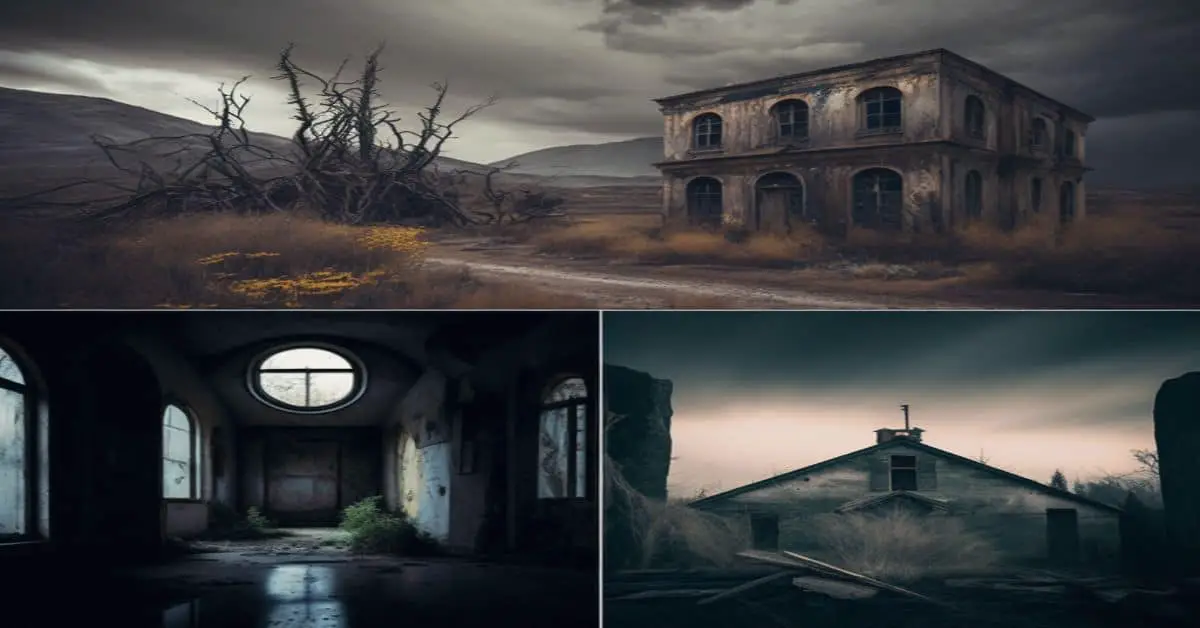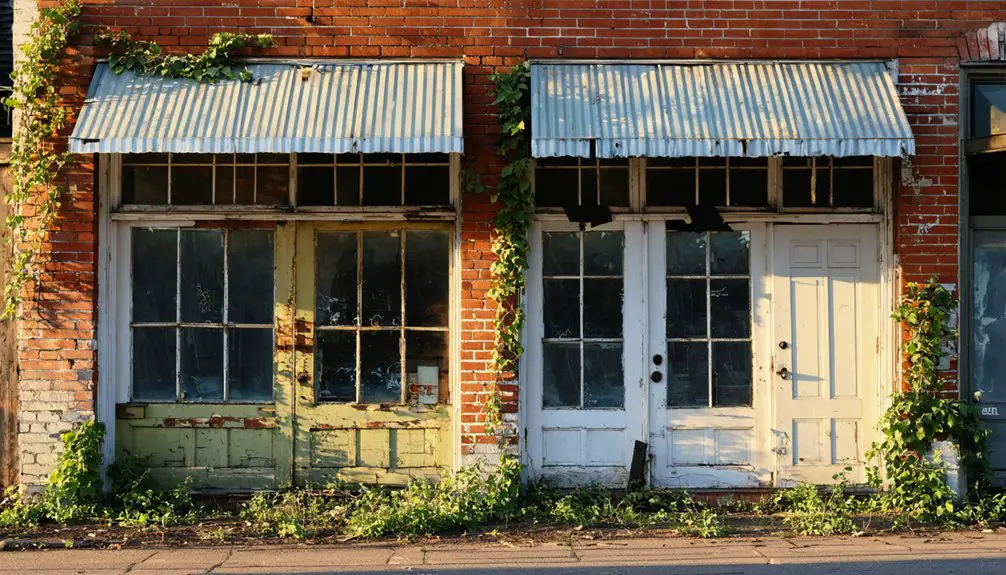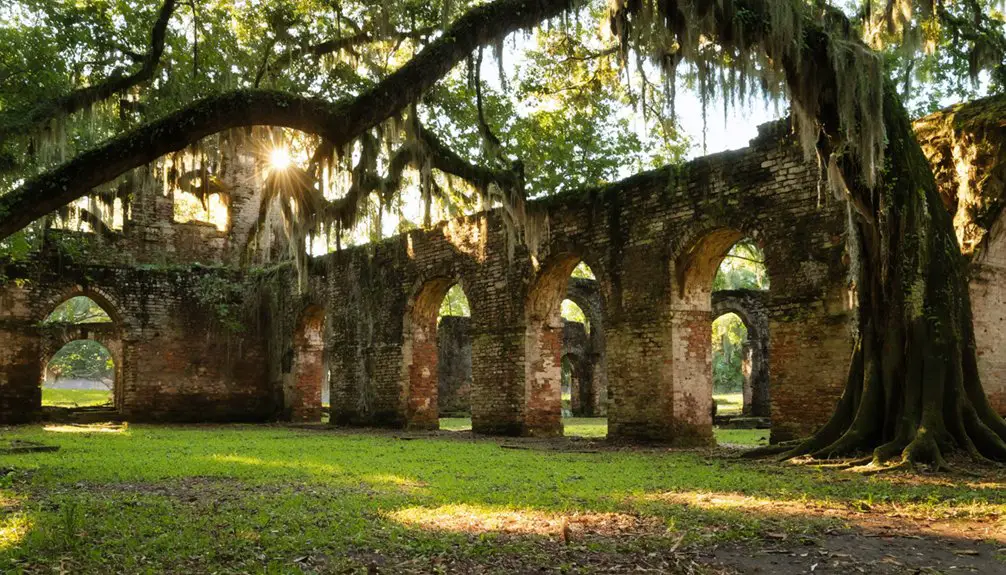You’ll find America’s oldest unsolved mystery in the Roanoke Colony, England’s first attempted settlement in North America. When Governor John White returned to the North Carolina settlement in 1590, he discovered it completely abandoned, with only the cryptic carvings “CRO” and “CROATOAN” left behind. Recent archaeological evidence, including European artifacts found at Native American sites, suggests the colonists may have integrated with local tribes after facing severe hardships. The truth behind their disappearance continues to intrigue historians and archaeologists alike.
Key Takeaways
- Roanoke Colony, established in 1585, became America’s first ghost town when all 115 settlers vanished mysteriously by 1590.
- The only clues left behind were the word “CROATOAN” carved on a fence post and “CRO” etched on a tree.
- Archaeological evidence suggests the colonists may have split up and integrated with local Native American communities.
- The settlement’s complete abandonment occurred during a three-year period when supply ships couldn’t reach the colony due to war.
- Recent discoveries at Site X near Albemarle Sound reveal artifacts indicating colonist activities after the settlement’s apparent abandonment.
The Birth of England’s First American Settlement
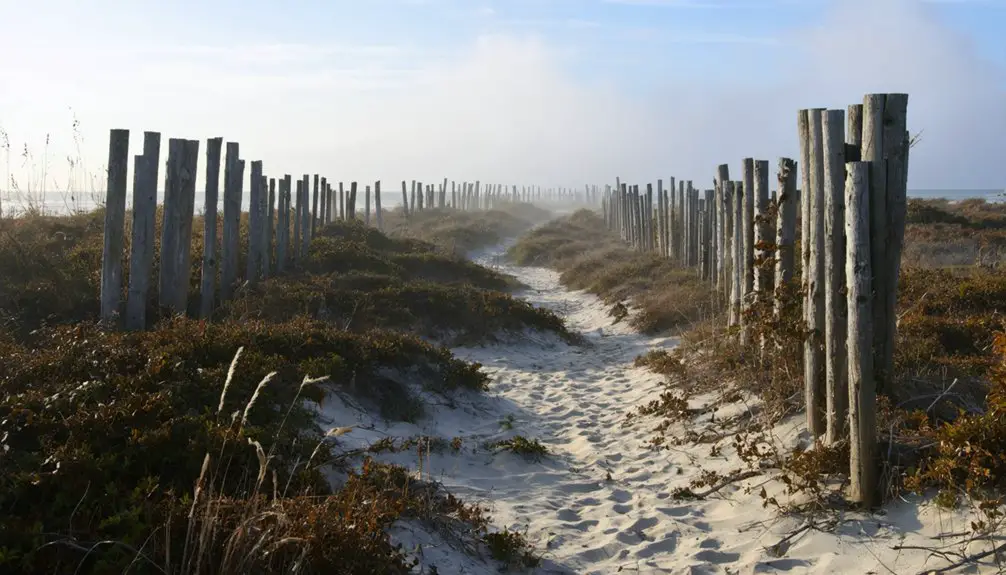
While England lagged behind other European powers in North American colonization, Sir Walter Raleigh’s 1584 charter from Queen Elizabeth I marked the nation’s first serious attempt to establish a permanent settlement in the New World.
Raleigh’s colonial ambitions began with a reconnaissance mission led by Philip Amadas and Arthur Barlowe to the Outer Banks region. Their reports painted an enticing picture of fertile islands rich in resources and populated by friendly indigenous tribes.
Amadas and Barlowe’s expedition revealed promising territory: lush islands and welcoming native populations along the Carolina coast.
You’ll find that indigenous interactions played a significant role in early planning, as two Native Americans, Manteo and Wanchese, provided valuable intelligence about the region to English authorities.
The strategic location of Roanoke Island, combined with its potential for both military operations against Spanish interests and economic exploitation of natural resources, made it an ideal choice for England’s first colonial venture.
Daily Life and Struggles on Roanoke Island
Although Roanoke Island offered abundant natural resources like deer, fowl, and cedar trees, the colonists faced severe challenges in their daily struggle for survival.
You’d have found them developing hunting techniques to harvest wildlife and gathering oysters, while attempting to farm despite arriving too late in the growing season. They’d repaired and inhabited an existing fort, focusing on shelter construction for protection from both elements and hostile natives.
Daily life became increasingly difficult as relations with local tribes deteriorated. You would’ve witnessed colonists defending against attacks that destroyed food stores, while simultaneously depending on native knowledge for survival.
The settlers’ isolation grew worse when war between England and Spain prevented supply ships from reaching them, forcing them to rely solely on local resources they hadn’t yet mastered.
The Mysterious Disappearance of 1587
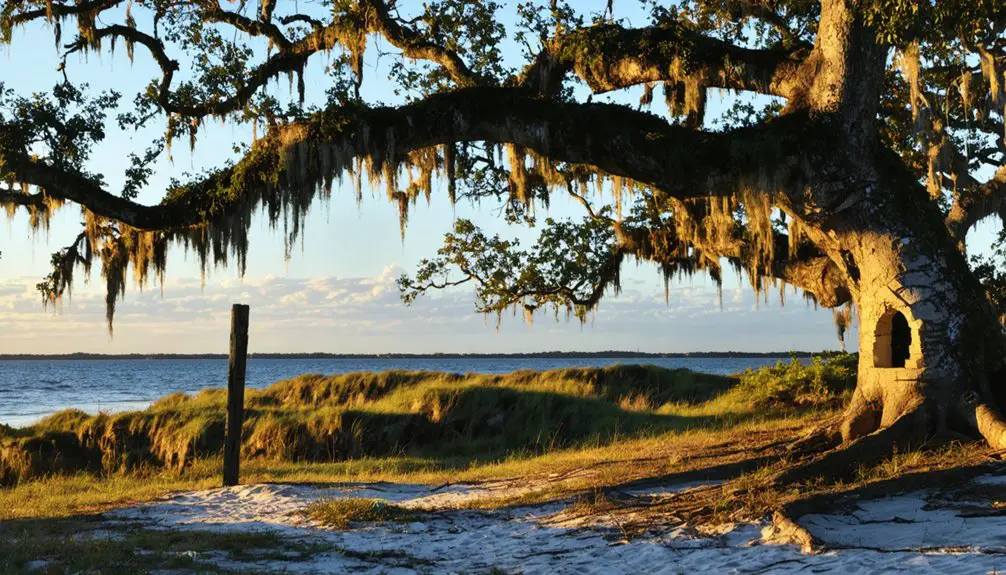
The shocking disappearance of Roanoke’s settlers in 1587 marked the beginning of America’s oldest unsolved mystery. When Governor John White returned in 1590, he found the settlement abandoned with only two cryptic carvings: “CRO” on a tree and “CROATOAN” on a fort post.
Multiple disappearance theories have emerged from studying colonist interactions. You’ll find evidence suggesting they may have succumbed to disease, starvation, or hostile attacks.
However, the absence of distress signals and bodies, combined with European artifacts discovered at Native American sites, points to a voluntary relocation. The most compelling theory suggests the settlers dispersed among friendly Native American communities, particularly on Croatoan Island.
Despite numerous rescue attempts, including Bartholomew Gilbert’s ill-fated 1603 expedition, no confirmed trace of the colonists was ever found.
Archaeological Evidence and Historical Clues
Recent archaeological discoveries have transformed our understanding of Roanoke’s lost colonists through tangible evidence of their presence and activities.
You’ll find proof of cultural interactions between English settlers and Native Americans through copper trade items and mixed pottery styles at the original settlement site.
At Site X near Albemarle Sound, archaeological discoveries reveal compelling evidence of the colonists’ relocation efforts:
- Surrey-Hampshire Border ware fragments
- North Devon baluster jar sherds from sea voyages
- Iron hammer scale indicating blacksmithing activity
- Square postholes suggesting European-style buildings
These findings, combined with evidence from Hatteras Island including a slate writing tablet, gun parts, and a gold signet ring, paint a clearer picture of the colonists’ survival strategies and their likely integration with Native American communities.
Enduring Legacy in Colonial American History
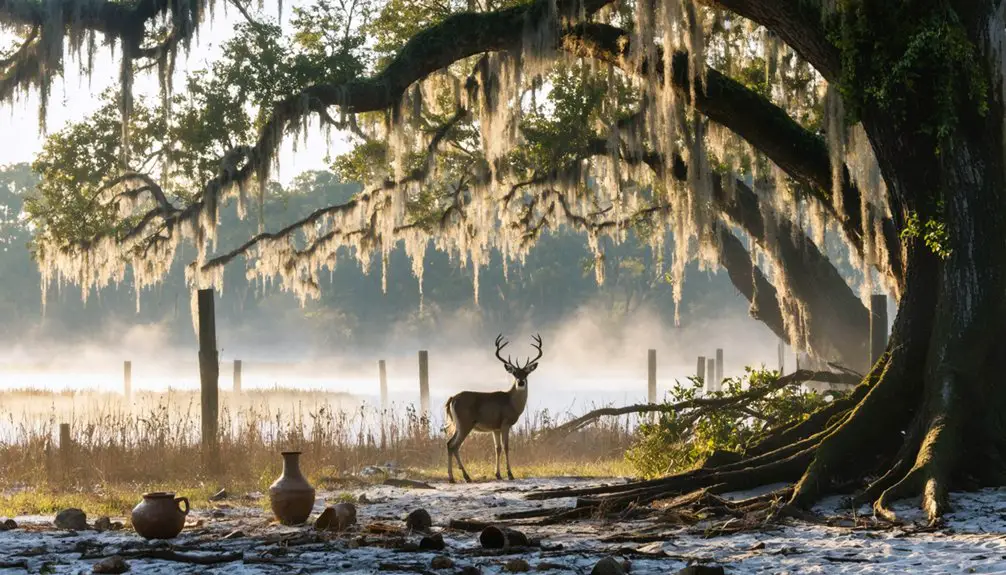
Beyond physical artifacts and archaeological findings, Roanoke Colony’s enduring influence profoundly shaped America’s colonial development and national identity.
You’ll find its impact resonating through subsequent English settlement strategies, as colonial tensions with Spain and Native Americans led to more calculated approaches in ventures like Jamestown.
The colony’s disappearance evolved into powerful cultural symbolism, represented by the mysterious “CROATOAN” carving that’s become synonymous with early American perseverance.
You can trace Roanoke’s legacy in England’s shift from purely military expeditions to family-centered settlements, forever changing colonization practices.
The settlement’s story transformed into a cautionary tale that sparked innovations in colonial planning, supply chains, and indigenous relations.
Even today, Roanoke’s influence continues through scholarly research, literature, and popular culture, embodying America’s pioneering spirit.
Frequently Asked Questions
What Specific Weapons and Tools Did the Roanoke Settlers Bring From England?
You’ll find they brought weapon types like arquebus, flintlocks, swords, daggers, and saker cannons, plus agricultural tools including spades, shovels, carpenters’ tools, and a portable forge for nails.
How Did Native American Women Interact With English Colonial Women?
Like water meeting oil, Native and English women’s interactions were limited. You’ll find cultural exchange happened mainly through trade and shared knowledge of food gathering, though language barriers and tensions restricted deeper connections.
What Crops Did Colonists Attempt to Cultivate on Roanoke Island?
You’ll find the colonists focused on corn farming using the “Three Sisters” method, growing beans and squash alongside it. They also planted gourds, sunflowers, potatoes, peas, onions, and attempted tobacco cultivation.
Were There Any Documented Marriages Between Settlers During the Colony’s Existence?
You won’t find any confirmed marriage records from Roanoke’s active period. While colonial customs likely included marriages among settlers, no documentation of specific unions survives from the colony’s brief existence.
What Types of Clothing Did Roanoke Colonists Adapt for the Climate?
You’ll find colonists made climate adaptations by favoring cotton and linen over wool, choosing breathable textile choices for the heat while keeping heavier layers and animal skins for cooler weather protection.
References
- https://en.wikipedia.org/wiki/Roanoke_Colony
- https://www.firstcolonyfoundation.org/history/the-roanoke-colonies/
- https://www.mentalfloss.com/posts/roanoke-lost-colony-facts
- https://www.britannica.com/story/the-lost-colony-of-roanoke
- https://www.npca.org/articles/3604-the-lost-colony-an-outer-banks-mystery
- https://www.thelostcolony.org/the-lost-colony/history/roanoke-voyages/
- https://encyclopediavirginia.org/entries/roanoke-colonies-the/
- https://www.outerbanks.org/plan-your-trip/the-islands/roanoke-island-and-dare-mainland/
- https://www.science.smith.edu/climatelit/the-roanoke-colony/
- https://coastalreview.org/2023/06/artifacts-appear-to-confirm-first-contact-at-roanoke-island/
